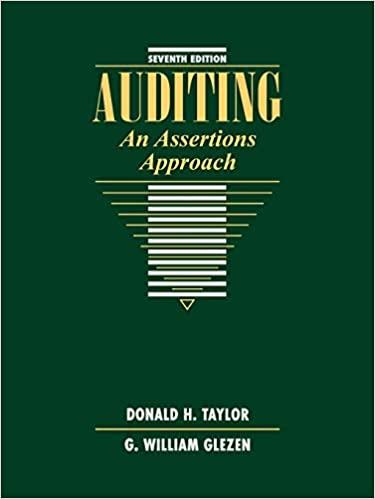


Question 5 Flag question Not yet answered Marked out of 1.00 Review of pre-consolidation equity method (controlling investment in affiliate, fair value differs from book value) Assume an investee has the following financial statement information for the three years ending December 31, 2019: (At December 31) 2019 2018 2017 Current assets $285,000 $277,500 $207,000 Tangible fixed assets 662,500 575,000 563,000 Intangible assets 45,000 40,000 50,000 $987,500 $897,500 $820,000 Total assets Current liabilities $120,000 $110,000 $100,000 Noncurrent liabilities 266,250 242,500 220,000 100,000 Common stock 100,000 100,000 Additional paid-in capital 100,000 100,000 100,000 Retained earnings 400,000 345,000 300,000 Stockholders' equity 600,000 545,000 500,000 Total liabilities and equity $986,250 $897,500 $820,000 (For the years ended December 31) 2019 2018 2017 Revenues $970,000 $920,000 $850,000 Expenses 875,000 840,000 775,000 $80,000 $95,000 $75,000 Net income $40,000 $35,000 $25,000 Dividends Assume that on January 1, 2017, an investor company purchased 100% of the outstanding voting common stock of the investee. On the date of the acquisition, the investee's identifiable net assets had fair values that approximated their historical book values, except for tangible fixed assets, which had fair value that was $112,500 higher than the investee's recorded book value. The tangible fixed assets had a remaining useful life of 6 years. In addition, the acquisition resulted in goodwill in the amount of $218,750 recognized in the consolidated financial statements of the investor company. Assuming that the investor company uses the equity method to account for its investment in the investee, what is the balance in the "investment in investee" account in the investor company's pre-consolidation balance sheet on December 31, 2019? $600,000 $875,000 $781,250 $989,250 Assume that on January 1, 2017, an investor company purchased 100% of the outstanding voting common stock of the investee. On the date of the acquisition, the investee's identifiable net assets had fair values that approximated their historical book values, except for tangible fixed assets, which had fair value that was $112,500 higher than the investee's recorded book value. The tangible fixed assets had a remaining useful life of 6 years. In addition, the acquisition resulted in goodwill in the amount of $218,750 recognized in the consolidated financial statements of the investor company. Assuming that the investor company uses the equity method to account for its investment in the investee, what is the balance in the "income from investee" account in the investor company's pre-consolidation income statement for the year ended December 31, 2019? $95,000 $36,250 $76,250 $55,000 Question 5 Flag question Not yet answered Marked out of 1.00 Review of pre-consolidation equity method (controlling investment in affiliate, fair value differs from book value) Assume an investee has the following financial statement information for the three years ending December 31, 2019: (At December 31) 2019 2018 2017 Current assets $285,000 $277,500 $207,000 Tangible fixed assets 662,500 575,000 563,000 Intangible assets 45,000 40,000 50,000 $987,500 $897,500 $820,000 Total assets Current liabilities $120,000 $110,000 $100,000 Noncurrent liabilities 266,250 242,500 220,000 100,000 Common stock 100,000 100,000 Additional paid-in capital 100,000 100,000 100,000 Retained earnings 400,000 345,000 300,000 Stockholders' equity 600,000 545,000 500,000 Total liabilities and equity $986,250 $897,500 $820,000 (For the years ended December 31) 2019 2018 2017 Revenues $970,000 $920,000 $850,000 Expenses 875,000 840,000 775,000 $80,000 $95,000 $75,000 Net income $40,000 $35,000 $25,000 Dividends Assume that on January 1, 2017, an investor company purchased 100% of the outstanding voting common stock of the investee. On the date of the acquisition, the investee's identifiable net assets had fair values that approximated their historical book values, except for tangible fixed assets, which had fair value that was $112,500 higher than the investee's recorded book value. The tangible fixed assets had a remaining useful life of 6 years. In addition, the acquisition resulted in goodwill in the amount of $218,750 recognized in the consolidated financial statements of the investor company. Assuming that the investor company uses the equity method to account for its investment in the investee, what is the balance in the "investment in investee" account in the investor company's pre-consolidation balance sheet on December 31, 2019? $600,000 $875,000 $781,250 $989,250 Assume that on January 1, 2017, an investor company purchased 100% of the outstanding voting common stock of the investee. On the date of the acquisition, the investee's identifiable net assets had fair values that approximated their historical book values, except for tangible fixed assets, which had fair value that was $112,500 higher than the investee's recorded book value. The tangible fixed assets had a remaining useful life of 6 years. In addition, the acquisition resulted in goodwill in the amount of $218,750 recognized in the consolidated financial statements of the investor company. Assuming that the investor company uses the equity method to account for its investment in the investee, what is the balance in the "income from investee" account in the investor company's pre-consolidation income statement for the year ended December 31, 2019? $95,000 $36,250 $76,250 $55,000









